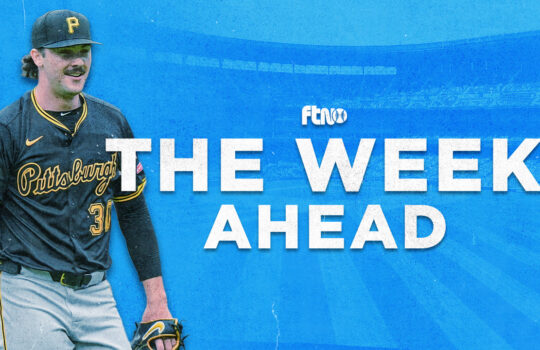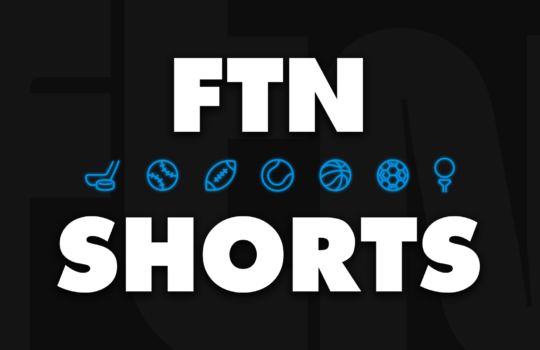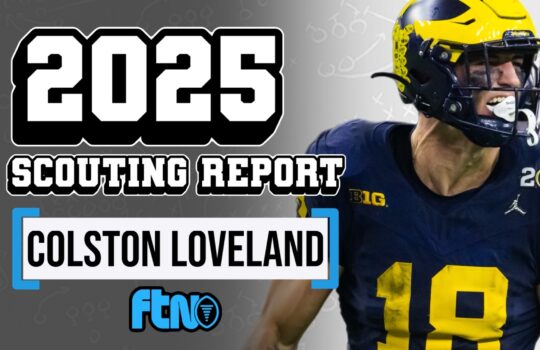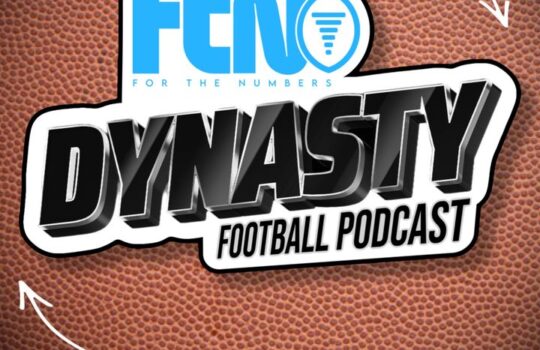
Baseball lends itself to numerical intrigue — there have long been bountiful statistics surrounding the game, and in today’s analytics heavy version of the game, there are more numbers than ever before. Knowing what numbers are meaningful and from which actionable information can be ascertained can make all the difference. The margins have never been thinner, and the impact of every discernible edge has never been more pronounced. Here are some of the numbers that jump out at me when taking a look at Wednesday’s DFS slate.
1. 1.75
This is Hunter Greene’s HR/9 in the month of June. This is an especially interesting stat, because it is both incredibly high (would be the third highest amongst qualified pitchers if Greene had enough innings), and for Greene in particular, represents a massive improvement from his April and May numbers (2.50 and 3.42, respectively — either of these would be highest in MLB by a healthy margin).
Greene starts are always interesting — there is usually plenty of action and if he isn’t striking guys out, then guys are usually hitting the ball pretty hard. However, he’s also getting more K’s (31.4%) and fewer walks (5.9%) than he has in the two previous months, and these are all signs of a young pitcher who is figuring out how to pitch after simply blowing gas past overmatched minor league opponents over the last three years.
2. 40.2%
This is Dylan Bundy’s hard contact rate on the road so far this season. Truth be told, I could have picked anything — Bundy loves pitching at home, as displayed by a 2.10 home ERA, but has been an unmitigated disaster on the road, with the aforementioned hard contact rate spiking (as opposed to only 19.8% at home) and more traditional measures like ERA and BABIP tell the same story. Perhaps the most telling distinction is his ability to keep baserunners from turning into runs absolutely has the floor fall out from underneath him, he has only a 61.1% strand rate on the road as opposed to a 90.9% strand rate at home.
I’m not one to try and figure out the reason behind drastic home/road splits, but I will certainly observe them where they are apparent, and a road start for Bundy should mean bombs away for a Cleveland squad that might not otherwise garner much attention with some more explosive offenses, including a third consecutive Dodgers at Coors game wherein they have disappointed in each of the first two.
3. 13
This is the number of Royals Shohei Ohtani struck out in his last start. While he is one of the pricier pitchers on the slate, it is for good reason. While the White Sox offense broke out for double-digit runs Tuesday, they were not facing an Ohtani caliber pitcher, and I don’t know that there are many such pitchers that exist. I would not shy away from loading up on Ohtani one bit, especially at this reasonable price.
4. 62.7%
That is the ground ball rate allowed by Cardinals SP Andre Pallante so far this season, which would be second among all qualifying pitchers to only Framber Valdez if Pallante had enough innings to qualify. He needs it, as he doesn’t really miss bats or generate a lot of soft contact, so the only way for him to survive is via this massive ground ball rate. The good news for Pallante is that his infield is adorned with talented and experienced Gold Glovers, so the ground balls turn into outs more frequently than they might with other, less heralded defenses behind him.
Somewhat as a corollary to the outlier ground ball rate, the Marlins are 4th in GB% themselves, so the expected outcome for Pallante should be a lot of ground balls when the Marlins do make contact in play. At only $5,100 on DK, he is priced like an opener or bulk guy while being fully stretched at 90 pitches in his last outing. He is certainly worthy of a look.
5. 20, .280
This is the respective HR count and ISO for Phillies prospect Darick Hall, who will be joining the club for Wednesday’s game against the Braves. While currently not in the player pool on either site, if he gets added, he will likely be at min price or close to it and has the same profile as the much more heralded Italian Breakfast, Vinnie Pasquantino of the Royals. Even if he is not eligible, we’ll want to be mindful of his presence in the lineup, as it is another power LHB for Kyle Wright to have to contend with.
6. 7.27
This is Nick Pivetta’s ERA in two starts against the Blue Jays so far this season. While we should take extreme amounts of caution in deriving anything meaningful from a sample size as small as two abbreviated starts (not even 10 total innings), it is the case that Pivetta has been excellent against almost everyone else and horrid against the Blue Jays. This makes sense on the surface — the Blue Jays are a tough lineup, but since there may be the perception of Pivetta as a tough opponent, in combination with the Blue Jays usually being an expensive team to stack, we could see them go under the radar in a spot where they have had a lot of success so far this season.
7. 2.44
This is Germán Márquez HR/9 at home so far this season. You probably don’t need a ton of advanced stats to tell you to stack the Dodgers against Márquez at Coors, but just in case two games’ worth of recency bias has you doubting the Dodgers behemoth, let us remind you that Márquez gives up all the home runs at Coors. That sounds like hyperbole, he has given up 12 at home and only 2 on the road. He also has only a 5.9% BB rate, which sounds like a positive thing except it is paired with a .317 BAA and 39.5% hard contact rate, so he is getting absolutely beat up early in the count and in hitters counts, the low walk rate is due to plate appearances not making it far enough into the count for a walk to be possible. This is precisely the sort of pitcher we want to stack against.
















































 New York Jets
New York Jets  New England Patriots
New England Patriots  Miami Dolphins
Miami Dolphins  Buffalo Bills
Buffalo Bills  Pittsburgh Steelers
Pittsburgh Steelers  Cleveland Browns
Cleveland Browns  Cincinnati Bengals
Cincinnati Bengals  Baltimore Ravens
Baltimore Ravens  Tennessee Titans
Tennessee Titans  Jacksonville Jaguars
Jacksonville Jaguars  Indianapolis Colts
Indianapolis Colts  Houston Texans
Houston Texans  Las Vegas Raiders
Las Vegas Raiders  Los Angeles Chargers
Los Angeles Chargers  Kansas City Chiefs
Kansas City Chiefs  Denver Broncos
Denver Broncos  Washington Commanders
Washington Commanders  Philadelphia Eagles
Philadelphia Eagles  New York Giants
New York Giants  Dallas Cowboys
Dallas Cowboys  Minnesota Vikings
Minnesota Vikings  Green Bay Packers
Green Bay Packers  Detroit Lions
Detroit Lions  Chicago Bears
Chicago Bears  Tampa Bay Buccaneers
Tampa Bay Buccaneers  New Orleans Saints
New Orleans Saints  Carolina Panthers
Carolina Panthers  Atlanta Falcons
Atlanta Falcons  San Francisco 49ers
San Francisco 49ers  Seattle Seahawks
Seattle Seahawks  Los Angeles Rams
Los Angeles Rams  Arizona Cardinals
Arizona Cardinals 










 Boston Celtics
Boston Celtics  Brooklyn Nets
Brooklyn Nets  Philadelphia 76ers
Philadelphia 76ers  New York Knicks
New York Knicks  Toronto Raptors
Toronto Raptors  Chicago Bulls
Chicago Bulls  Detroit Pistons
Detroit Pistons  Milwaukee Bucks
Milwaukee Bucks  Cleveland Cavaliers
Cleveland Cavaliers  Indiana Pacers
Indiana Pacers  Orlando Magic
Orlando Magic  Atlanta Hawks
Atlanta Hawks  Charlotte Hornets
Charlotte Hornets  Miami Heat
Miami Heat  Washington Wizards
Washington Wizards  Denver Nuggets
Denver Nuggets  Minnesota Timberwolves
Minnesota Timberwolves  Oklahoma City Thunder
Oklahoma City Thunder  Portland Trail Blazers
Portland Trail Blazers  Utah Jazz
Utah Jazz  LA Clippers
LA Clippers  Golden State Warriors
Golden State Warriors  Los Angeles Lakers
Los Angeles Lakers  Phoenix Suns
Phoenix Suns  Sacramento Kings
Sacramento Kings  Dallas Mavericks
Dallas Mavericks  Houston Rockets
Houston Rockets  Memphis Grizzlies
Memphis Grizzlies  New Orleans Pelicans
New Orleans Pelicans  San Antonio Spurs
San Antonio Spurs 










